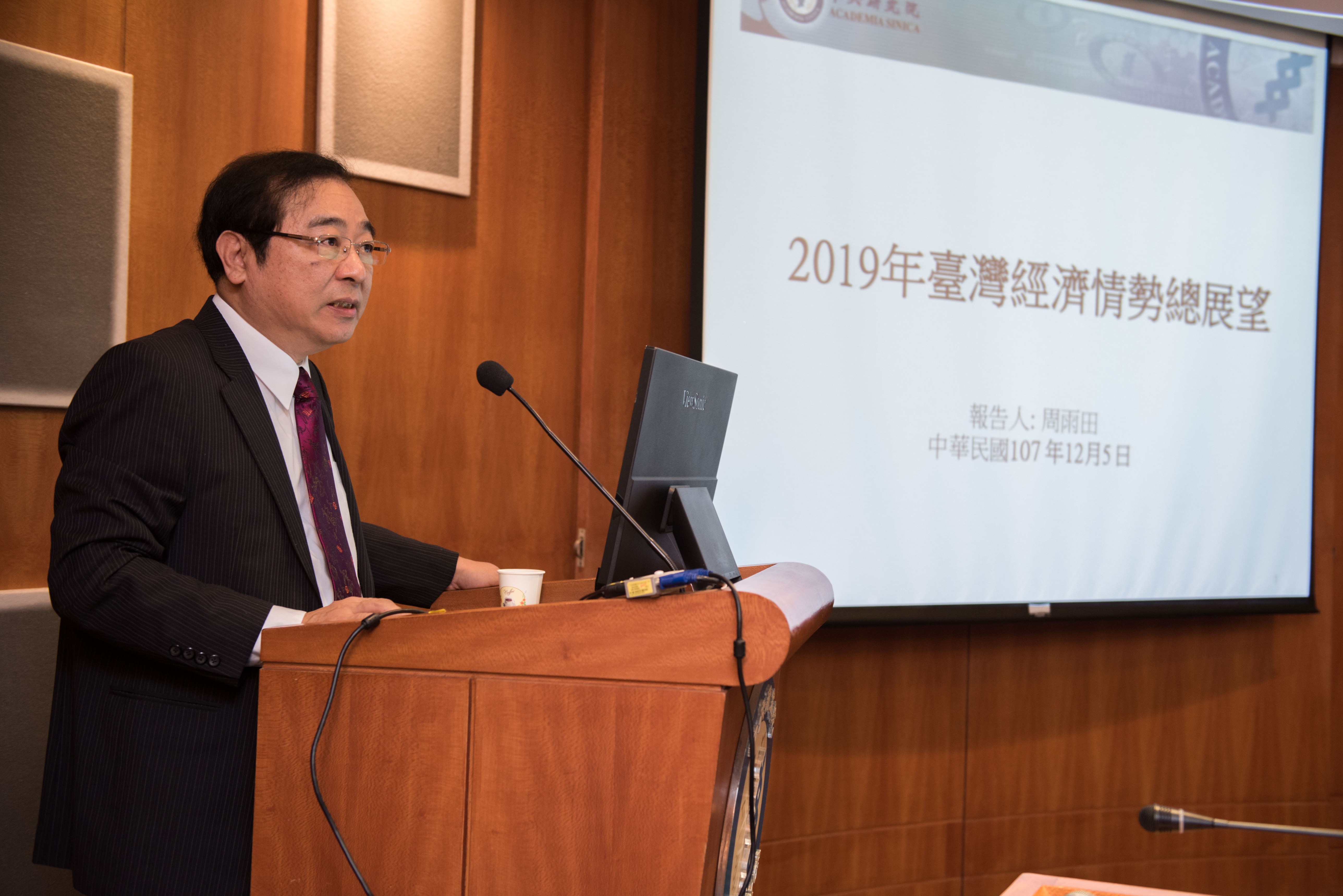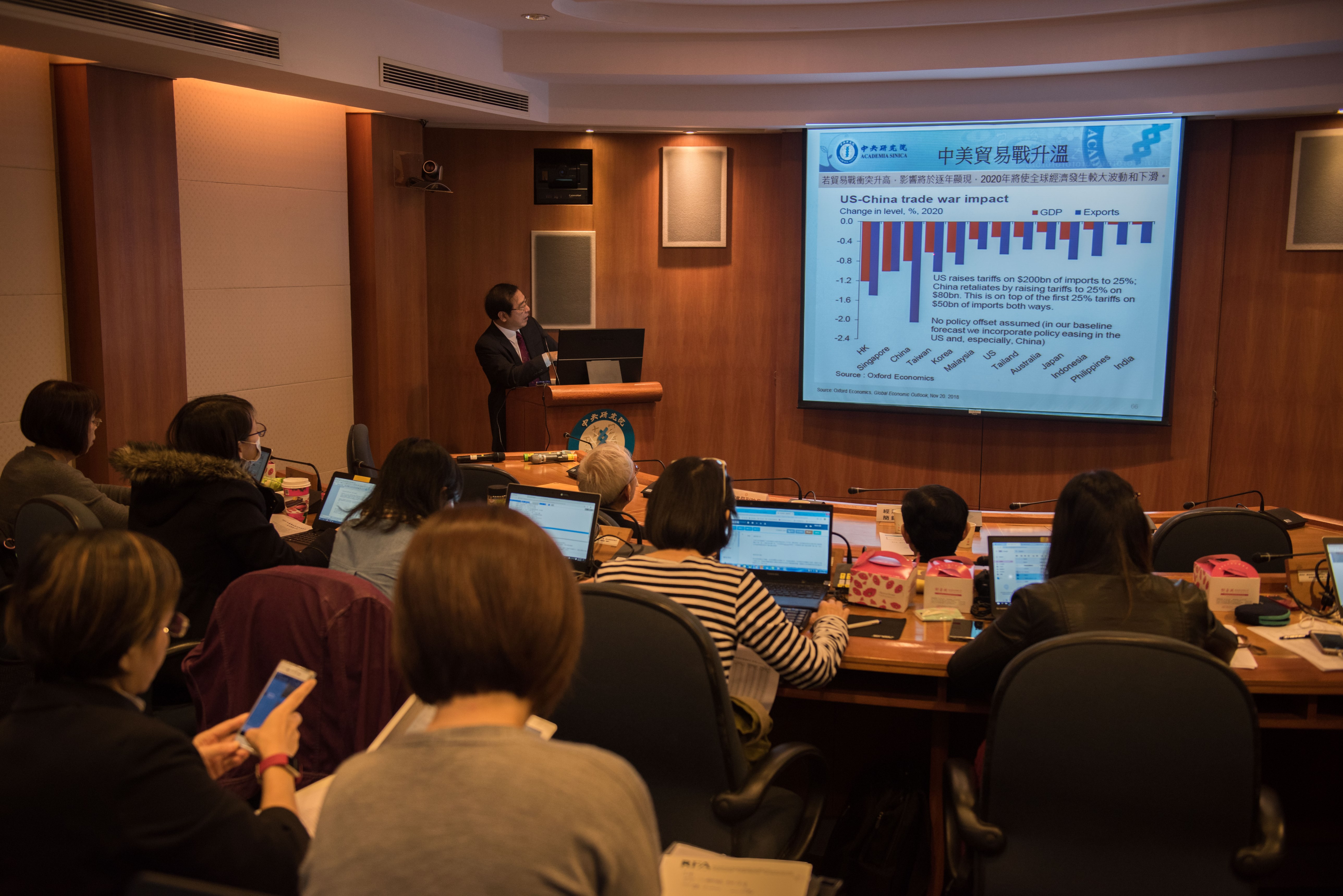Due to the heating up of China-U.S. trade conflict and more dramatic fluctuations in international financial markets, the pace of expansion in the global economy has shown instability and the downside risk is gradually getting realized, suppressing the growth momentum. Whist the U.S. economic performance is strong, growth of other major advanced economies such as Europe and Japan are not as strong as anticipated. The slowdown in China’s economic growth partly due to the trade war is resulting in weak demand in both export and domestic markets. As for Taiwan, the real GDP grew by 2.27% (year-on-year) in the third quarter of 2018 as consumption weakened and export markets were affected adversely by the trade war. Therefore, the revised estimate of economic growth rate in 2018 is 2.64%. Looking forward to 2019, the global economic outlook is still suffering from the risk of trade wars, slowdown in China’s demand, diminishing effects of the U.S. tax cuts and a tightening in financial markets, implying the global growth momentum will continue to slow. We expect the real GDP growth of 2.45% in 2019.

Real private consumption grew by 1.80% (year-on-year) in the third quarter this year, mainly reflecting the decrease in consumption of durable goods, motor vehicles, electronic products and home appliances. However, the strong consumption momentum of the first half of the year, though weakened, is still considered stable. Besides, the wholesale and retail catering turnover from January to October increased by 4.30%. The cumulative turnover is still higher than the same period of the previous year, indicating that the fundamental momentum of domestic demand is expected to continue. Considering increased demand during the traditional peak season for consumption in the last quarter, real private consumption is projected to grow by 2.16% in 2018. Fluctuations in the financial market and inadequate domestic stock momentum have resulted in the latest Taiwan Consumer Confidence Index (CCI) being on the decline. However, the improving labor market for basic wages would help private consumption to grow moderately. Taking these factors together, the real private consumption is projected to grow by 2.26 % in 2019.
In respect of private investment, benefiting from the recovery of semiconductor equipment purchases and continued growth in construction projects, real private investment is estimated to have grown by 5.21% in the third quarter. Furthermore, as approved foreign direct investment is increasing, it will help enhance the contribution of private investment to economic growth in the second half of the year. The government is still proactively removing investment barriers, promoting forward-looking infrastructure projects and developing Taiwanese repatriation projects, in order to reduce the impact of uncertainties brought about by trade wars on corporate confidence and willingness to invest. At the same time, domestic manufacturing sector will still remain in expansionary territory. All these factors therefore lead to the expectation that real private investment shall grow by 3.17% (year-on-year) in 2018 and 4.31% in 2019. On the other hand, the proactive efforts made by the government to attract foreign investors and encourage public participation in public construction will continue to expand the next year’s government and public investments. Considering the increasing investment by government and government-owned enterprises, it is also predicted that the gross fixed capital formation will grow 3.61% in 2018 and the rate shall then accelerate to 5.39% in 2019.
As for foreign trade, benefiting from the expansion of demand for emerging technology applications and smart automation equipment, orders for electronic products and manufacturing machinery have increased. In addition, the rising international raw material prices are leading to improvement in the derived demand for relevant exports which in turn is resulting in imports registering prominent growth. As a result, the growth rate of exports and imports of real goods and services reached 1.21% and 4.64% respectively in the third quarter this year. Nominal values of exports and imports (in US$ terms) in the first ten months rose 8.0% and 12.5% respectively, maintaining positive growth. Exports and imports of goods and services are projected to grow by 3.55% and 4.81% respectively in 2018. With continued expansion of demand for emerging technology applications, momentum in external trade is expected to persist in the next year. However, the knock-on effects of China-U.S. trade war and China’s stagnating growth have discouraged domestic real exports and imports. After taking into account the price factors and a higher base year, real exports and imports of goods and services are projected to grow by 3.11% and 3.01% (year-on-year) respectively in 2019.
The price level has been affected by a sustained rise in international oil prices and the influence of the tax on cigarettes and thus, the annual rise in Consumer Price Index (CPI) was 1.60% for the first ten months and the core CPI was only 1.34%, indicating that the current price level is relatively stable. The Wholesale Price Index (WPI) rose 4.02% in the first ten months as international commodity prices soared. The annual CPI and WPI in 2018 are estimated to grow 1.49% and 4.12%, respectively. Considering the impact of cigarette tax on inflation is withering out and there is limited room for further increase in international oil price and raw material prices, the rise in operating costs of corporates is expected to abate. Accordingly, the annual CPI and WPI in 2019 are estimated to grow 1.08% and 1.84% (year-on-year), respectively.
Reflecting the recovery of the economy and the stability in the labor market, the average unemployment rate in the first ten months was 3.71%, lower than the 3.76% in 2017, indicating the domestic employment market is satisfactory. It is estimated that unemployment rate in 2018 and 2019 will remain at about 3.70%, considering the ongoing improvement in the overall salary. In terms of money supply, while the stock crisis in October led to lower domestic demand for funds, the annualized growth in money supply M1B and M2 in the first ten months was 5.30% and 3.60%, respectively, showing abundance of liquidity. M1B and M2 are expected to register growth of 5.20% and 3.62% respectively in 2018. Prospects for the domestic economic growth will be weakened next year but companies’ capital requirements are still expected to warm up, indicating an expectation of M1B and M2 growth of 3.98% and 3.76% respectively in 2019.
Looking forward in the year of 2019, in view of uncertainties such as probability of escalation of China-U.S. trade war, turmoil in the financial markets, expectations of gradual raising of interest rates by the US-Fed and global political tensions persisting, IMF and the OECD have lowered the latest forecasts of global economic growth and world trade volume for the year of 2019. Their Economic Outlook for 2019 has indicated a strong wait-and-see stance with hidden concerns. The high tariff barriers and many countries tightening monetary policies will certainly affect consumer confidence and corporations’ willingness to invest. As for Taiwan, weakening of manufacturing PMI and the flagged Nikkei PMI index for October, leaded slight expansion of the domestic economic climate but weakness of growth momentum. This shows uncertainty is impacting business confidence, as trade wars heat up. Despite the trade war truce now, risk still remain. If the China-U.S. trade dispute grows, global trade and supply chains of companies will have to adjust their plans and working. This would be of particular concern for Taiwan as the structure of the export industry may have to change and affect production decisions. Meanwhile, the improvement of investment environment and the move to delay phasing out of nuclear power plants might be favorable factors for investments by companies. Considering the uncertain international situation, the real policy effect has become the main indicator of whether the growth momentum is going to be sustained. Much would depend on how the government strives to use expansionary fiscal policies such as stimulating implementation of major public infrastructure projects, boosting investments and strengthening development of domestic industries. Against this background, barring forecast errors and uncertainty factors, the 50% interval forecast for GDP growth in 2019 will range from 1.34% to 3.73%.

